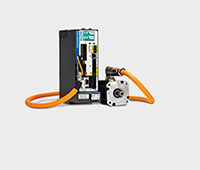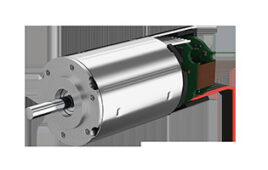 In Europe, the Internet of Things is more commonly known as Industry 4.0 or Integrated Industry. In this Q&A, Horst Messerer, Sales Manager for Data, Network & BUS Technology at HELUKABEL, discusses the cable technology requirements for the smart factory of the future.
In Europe, the Internet of Things is more commonly known as Industry 4.0 or Integrated Industry. In this Q&A, Horst Messerer, Sales Manager for Data, Network & BUS Technology at HELUKABEL, discusses the cable technology requirements for the smart factory of the future.
Q: What is the importance of the Internet of Things/Industry 4.0 beyond the hype around the buzzwords?
A: Industry 4.0 is a clever move by the world’s industrial sector, because what lies behind it is how we, in high-wage countries, survive long term in an increasingly competitive environment. We all seek to automate cleverly and optimize our processes to deliver the best quality products. We are right at the forefront of improvement, in that with ever-increasing speeds, minimal non-productive times and fault-free output, horizontally and vertically interconnected production structures, goods and tools with their own memory, human-machine communication and direct interaction between machines—a fascinating new world is opening up.
Q: Is Industry 4.0 actually bringing the predicted revolution in some places?
A: I think the “revolution” buzzword is an exaggeration. If we keep our feet on the ground, a change is taking place, which will permanently alter production processes. However, there is nothing revolutionary happening to us; rather, we are exploiting opportunities that are made possible by the technologies available today. The Internet of Things will definitely continue to evolve as we push the boundaries of technology even further.
Q: How is this technology affecting the cable industry?
A: Let me cover that in three phases. Over three decades ago, we had low-capacitance control cables that needed one cable for each function. For example, if you were addressing 20 sensors, you needed a 20-pair cable. For a good 25 years, BUS systems have been the norm—one cable can address multiple components and therefore, space was saved. Now, with Industry 4.0, Fieldbus is reaching its limits.
Q: Has Fieldbus therefore come to an end?
A: Not at all, it is merely being shown its limits. In the BUS world, we talk about data rates in the range of 1 to 20 Mbit—at best—and response times of 20 msec. However, real-time communication needs a more reactive medium with response times under 100 μsec and data rates in the range of 100 Mbit and greater.
Q: What is the answer to these high demands?
A: It is based on the cable technology of Industrial Ethernet—Profinet, Ethernet/IP, EtherCAT, Powerlink or SERCOS—protocols that are already long established in IT finding their way into the factory. Unfortunately, as in the Fieldbus war of the 1980s, no standard has yet emerged. Almost a dozen solutions are currently competing to be the industry standard.
Q: And currently superseding Fieldbus?
A: In some cases, yes, but not necessarily. Whenever a fast speed is needed, Industrial Ethernet has the advantage with its performance data. In a refinery that has long-lasting processes though, who needs real-time communication with millisecond accuracy? In many cases, Fieldbus still has a future and various BUS systems still have further growth to achieve. Industrial Ethernet is also not new. If we look at market trends, then we see that a damper was put on Fieldbus applications and Industrial Ethernet grew disproportionately in 2014, so we reached a turning point only in the past year.
Q: This has consequences for a cable manufacturer though…
A: Indeed. Manufacturers, HELUKABEL included, need the right cable for every protocol. Unfortunately, from the perspective of the user, cables are a C-part. However, in terms of function, they are an A-part when it comes to automation technology. This can be demonstrated well with examples.
Hybrid Ethernet cables, which transport power and data in two separate cores, are an excellent example. This conductor configuration places the highest demands on shielding, electromechanical compatibility and manufacturing because data flow must never be interrupted. We are therefore talking about ever-increasing demands with such focus areas like structural return loss as a quality attribute, and the relationship of cable attenuation to crosstalk attenuation depending on frequency. Cable manufacturers work in the area of high-frequency technology, which is a challenge for production, in particular, because products must be consistently precise and fine-tuned.
The second example is cable systems for the new digital encoder systems using the HIPERFACE DSL interface. Previously, servomotors and inverters have been connected with one cable for power transmission and one for the transmission of position information. The new encoder systems allow single-cable solutions to be used.
Q: What is the specific challenge?
A: Since the pair for data transmission is integrated into the servo cable, the durability of the data shield is particularly important. Tests on new cables have only limited significance, as the quality of the cable diminishes over time after continuous use in a cable track. HELUKABEL has therefore focused on the quality and service life of the copper shield that protects the data pair against interference from the power conductors.
Q: How can cable manufacturers ensure long-term durability?
A: It all comes down to the amount of testing that is done by each manufacturer. Stress loading needs to take place in both cable track and torsion testing equipment. For example, HELUKABEL tests hybrid cables in a dynamic cable track test for more than five million cycles. As the strain on cables is dependent on parameters such as distance, bending radius, speed and acceleration, we need these data from the customer. The more precise the details are, the more detailed our designs can be for each cable. However, this cannot always be calculated and must therefore be determined empirically. Even though we have extensive empirical values in a database, the test is always needed since practical application ultimately confirms the cable’s durability.
Whenever we talk about automation, we are talking about robotics and drag chains. On top of the electrical requirements, topics such as abrasion resistance, bending capacity, media resistance and torsional stability quickly arise. In addition, greater intelligence in the cable is also certain to come up. The cable becomes the backbone of Industry 4.0, since nothing happens at all without a close-knit cable network that connects countless components in an automated factory.
HELUKABEL
helukabel.com
Filed Under: Cables + cable management, MOTION CONTROL





Tell Us What You Think!